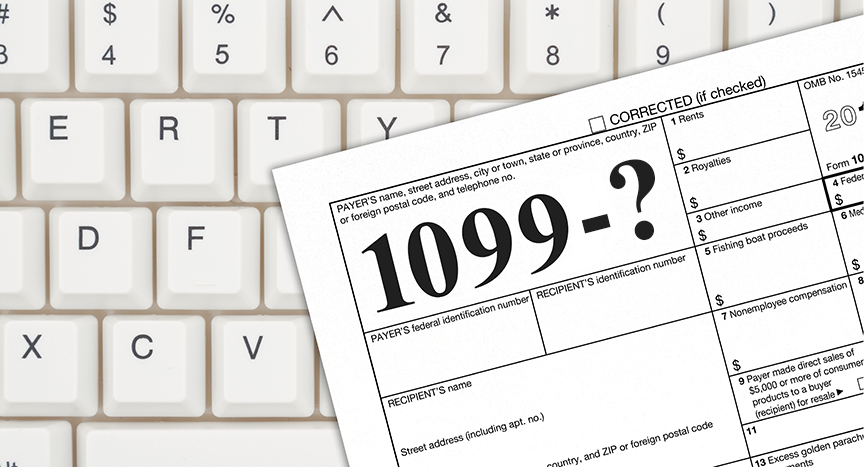Here is a guide to the most common types of 1099 forms.
If you’ve received a 1099-INT tax form from your bank, it signifies it paid interest on your savings account. Another 1099 form may come from the state you live in, attesting to its tax refund you have received. If you’re a freelancer or contract worker, you may have received a 1099-MISC from your clients. And, as an employer, if you paid independent contractors more than $600 each in a given year, you need to complete a 1099-MISC.
All the forms have your Social Security number or taxpayer identification number, and that means the IRS will know that you’ve received money — and know whether you report that income on your tax return. Likewise, the IRS wants to keep tabs on the money you’ve paid contractors.
However, receiving a 1099 doesn’t necessarily mean you will have to write a check to the IRS come April 15. You may have deductions that offset the income — expenses, for example — if you’re a freelancer or contract worker.
So, which types of 1099 tax forms are likely to cross your path? Here’s a list:
- 1099-A — You may receive one of these if your mortgage lender cancelled some or all of your mortgage or if you were involved in a short sale of your home. The government considers canceled debt as a type of income, and it’s typically taxable.
- 1099-B — Income from the sale of several types of securities and some kinds of bartering on bartering exchanges. A 1099 isn’t usually required if you barter with someone directly, although that may not relieve you of reporting responsibilities.
- 1099-C — If a credit card issuer or other lender settles your debt for less than you owe, you still may owe money — the same as with a full or partial mortgage cancellation. The amount the lender forgives is likely taxable income, and the 1099-C will let you know.
- 1099-CAP — If you hold shares of a corporation that was acquired or underwent a big change in capital structure and you got cash, stock or other property as a result, expect to receive a 1099-CAP.
- 1099-DIV — This form reports dividends you received, though it doesn’t include dividends on your share account at your credit union. You’ll see that money on a 1099-INT.
- 1099-G — Have you received money from the state, local or federal government? A tax refund, credit or offset? You may receive a 1099-G. If you were on unemployment during the year, you may expect to see a 1099-G heading your way.
- 1099-INT — If you earned more than $10 in interest from your bank, brokerage or other financial institution, you can expect to receive a 1099-INT.
- 1099-SA — You’ll get one of these if you took a distribution from a health savings account. As long as you used the money for an approved purpose, this amount is not taxable, but the form serves as a record of the distribution.

